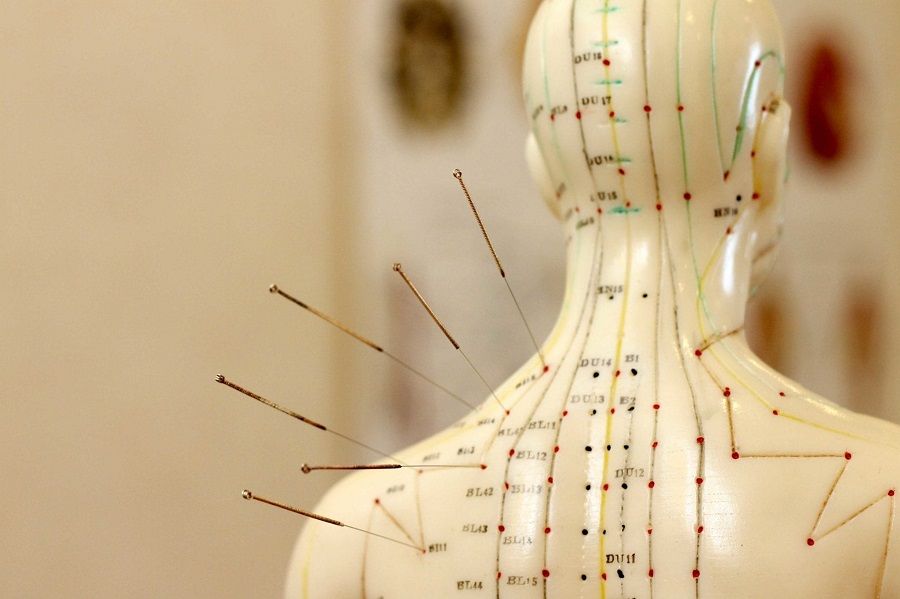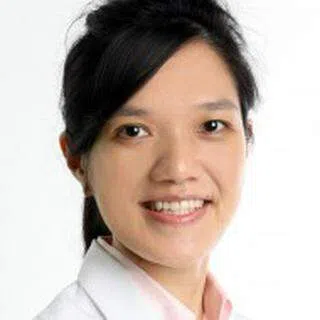Acupressure points and acupuncture: How does it work?
Is it true that by applying pressure at different points and parts of the body through needle acupuncture or acupressure massage, one's health can improve? What is the logic behind this?

The saying "一针,二灸,三用药" (roughly "needling first, moxibustion second, medicine third") suggests that traditional Chinese medicine (TCM) physicians in olden times generally believed that when prescribing treatment, acupuncture should be considered first before proceeding with moxibustion (a therapy often used in conjunction with acupuncture involving burning dried mugwort leaves on or near certain parts of the body), and then herbal medication.
Indeed, in the ancient classic Yellow Emperor's Canon of Internal Medicine (《黄帝内经》, Huangdi Neijing), which lays the foundation for many TCM theories, a considerable part of the book is dedicated to the meridian theory of acupuncture points in the body and the principles of acupuncture treatment. This may be surprising to many of us as getting a TCM herbal prescription seems to be the more popular option today.

Why acupuncture is preferred over herbal medicine
In modern times, acupuncture is considered the "greener" option as herbal medication can deplete the earth of some of its plant and animal resources. There are also several reasons supporting the traditional preference for acupuncture over the use of herbal medication.
1. Acupuncture promotes recovery by triggering the body's physiological responses, hence avoiding the problem of drug resistance whereby subsequent greater dosage of herbs/drugs may be required to bring about the same level of efficacy.
2. Acupuncture is generally safe and does not lead to drug dependence. Oral consumption of herbal medication over long periods can increase the burden on the body. The saying "是药三分毒" (shiyao sanfen du, lit. All medicines contain a certain element of toxicity ) implies that any medication (or even food) can give rise to side effects with inappropriate dosage or prolonged consumption.

3. Acupuncture can be executed quickly and is believed to produce faster effects as they target the meridians or channels of energy flow in the body directly. This is especially crucial for emergency cases where there is usually a golden window for treatment. For instance, a particular group of acupoints typically located at the fingertips and toes, known as jing-well points (井穴), are used in emergencies and resuscitation efforts. The preparation of herbal decoctions requires more time, thus delaying treatment and reducing efficiency.
The body as a complex network of acupoints
Ancient TCM philosophers reportedly discovered that the stimulation of certain points on the body (using conventional tools such as needle-stones (砭石) led to symptomatic alleviation for particular ailments. With rigorous experimentation and keen observation, they derived the patterns of the needle points which forms the basis of the TCM meridian (Jing Luo 经络) theory.
Acupressure points (or acupoints) do not occur randomly. Most of them fall along these 14 mentioned meridians (经穴, meridian points), while some do not (奇穴, extra points).
The TCM meridian system refers to a distribution of the channels within the body which facilitates the movement of "qi" (vital energy), blood, essence and fluids. This is important for the nourishment, energy distribution and communication amongst the internal organs, limbs, joints and also the superficial regions of the body.

The 12 principal meridians run longitudinally in different regions of the body in a systemic fashion. They are closely associated with the functioning of the 12 yin and yang organs (viscera) and even share the same name. The yin meridians consist of the liver, heart, pericardium, spleen, lungs and kidneys meridians while the yang meridians refer to the corresponding gallbladder, small intestine, triple warmer (combination of organs whose functions include regulating the flow of water in the body), stomach, large intestine and bladder meridians. Two other significant meridians are the Conception Vessel and Governing Vessel which span the front and back midlines of the body respectively.
Acupressure points (or acupoints) do not occur randomly. Most of them fall along these 14 mentioned meridians (经穴, meridian points), while some do not (奇穴, extra points). They are believed to be points where qi converges and function as gateways for energy flow. Needle acupuncture or acupressure massage involves the stimulation of these acupoints to bring about therapeutic effects. Over time, with the expansion of clinical work and the development of various theories, new experiential acupoints continue to be discovered and effectively applied in clinical treatment.

Therapeutic functions of acupoints
Each acupoint is known to have at least one therapeutic function. The therapeutic effects are grouped into three categories:
Using Zusanli ST36 again as an example, this acupoint is also known as the "point of longevity". It is believed that stimulating Zusanli ST36 can tonify (increase the available energy of) qi and blood, up the defence against pathogenic factors and reverse body weakness in general.
1. Local therapeutic effect. Targets areas of concern near the location of the acupoint. For example, Zusanli ST36 is located on the lower limb (below the knee, on the tibialis anterior muscle), and as expected, it is used to treat discomfort and pain in the knees and lower limbs.
2. Remote therapeutic effect. Usually associated with the meridian which the acupoint is located on, and the organ which the meridian governs. Using the same example of Zusanli ST36, this acupoint falls along the stomach meridian and is commonly used to treat ailments of the gastrointestinal system. Although Zusanli ST36 is located on the lower limbs, its effects extend to the digestive tract due to the flow of qi along the stomach meridian which runs through the abdominal region.
3. Special therapeutic effect. Some acupoints can provide symptomatic relief for certain conditions or have unique functions. Using Zusanli ST36 again as an example, this acupoint is also known as the "point of longevity". It is believed that stimulating Zusanli ST36 can tonify (increase the available energy of) qi and blood, up the defence against pathogenic factors and reverse body weakness in general. Another example is Neiguan PC6 located on the midline of the inner forearm and falls along the pericardium meridian. It enables dual regulation for both tachycardia and bradycardia (extremely fast or slow heart rate respectively). Neiguan PC6 also has the unique function of relieving nausea experienced in motion sickness and morning sickness (hyperemesis gravidarum).

The World Health Organization (WHO) recognises acupuncture therapy as an effective treatment modality and provides a list of conditions for which it has shown efficacy in controlled clinical trials. The effects of acupuncture and/or acupressure are now widely researched on. They can be effective in managing a diverse range of ailments, such as pain conditions (cancer pain, musculoskeletal or trauma pain, labour pain etc.), gynaecological disorders (menstrual and menopausal disorders etc.), mental health conditions (depression and anxiety etc.), learning disorders (autism spectrum disorder (ASD) and attention-deficit hyperactive disorder (ADHD) etc.) and addiction control (smoking cessation etc.), just to name a few.
Harmonising the yin and the yang
Acupuncture therapy aims to harmonise yin and yang of the body by tonifying deficiency and eliminating excess, regulating heat and cold syndromes and targeting the root causes of diseases. In pain treatment specifically, acupuncture aids in unblocking qi stagnation in the meridians or channels, thus relieving the pain when qi flow is optimised.
Studies have revealed that the insertion of needles at acupoints activates neural pathways and evokes a series of neuro-biochemical reactions on three different levels - local, regional (spinal cord) and general (brain).
Many have made attempts to understand acupuncture from the perspective of modern medicine. Although meridians are known to transport qi and blood, they are not equivalent to the nervous or circulatory systems. The mechanism and effects of acupuncture are commonly studied through the sensory neural pathways but till today, there is still no definitive model that can give a comprehensive description of the TCM meridian system and how each acupoint works to yield the specific therapeutic effects. It involves a complex interplay of factors in the neuroendocrine, anatomy and physiology aspects.
Studies have revealed that the insertion of needles at acupoints activates neural pathways and evokes a series of neuro-biochemical reactions on three different levels - local, regional (spinal cord) and general (brain).
Acupoints can be stimulated via different methods. Fine needles are inserted into the body at appropriate depths in acupuncture therapy. A firm pressure (by pressing or massaging) is exerted directly on the acupoints in the non-invasive acupressure therapy. Other means of stimulation include cupping (拔罐) and scraping (刮痧) etc.

While the above-mentioned methods are known for their therapeutic effects, acupuncture is more likely to trigger a stronger stimulation in activating the healing mechanisms. Acupuncture does not simply entail the action of inserting needles into the acupoints. Needle-manipulation techniques executed by the physicians during the insertion, retention and removal of needles are also critical.
Physicians carry out needle manipulations which are in line with the diagnosis and treatment requirements (to achieve tonifying (补) or eliminating (泻) effects in general). Often, manual needle manipulation is also done to attain deqi (得气), loosely translated to mean the "arrival of qi". It is said that deqi is necessary to enrich the qi flow and strengthen the effects of acupuncture. It is achieved when the physician feels a tugging sensation under the needle or when the patient experiences either soreness, numbness, distention, dullness or tingling localised at the needling site.

In conclusion, appropriate stimulation of acupoints can help achieve harmony of qi, blood, yin and yang. A smooth flow of qi and blood ensures that vital organs are well-nourished and able to function optimally, enhancing vitality, thereby strengthening one's immune functions and overall health. Accurate diagnosis and TCM syndrome differentiation of disease are essential in the optimal selection of acupoints for application of acupuncture therapy. Suitable treatment plans and corresponding needling techniques can give a large boost to treatment efficacy.
Articles under the Health section are supported by OSIM.



![[Photos] Fact versus fiction: The portrayal of WWII anti-Japanese martyrs in Taiwan](https://cassette.sphdigital.com.sg/image/thinkchina/3494f8bd481870f7c65b881fd21a3fd733f573f23232376e39c532a2c7593cbc)

